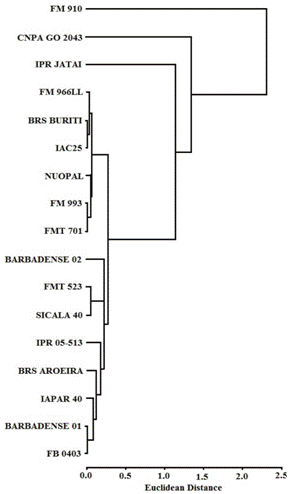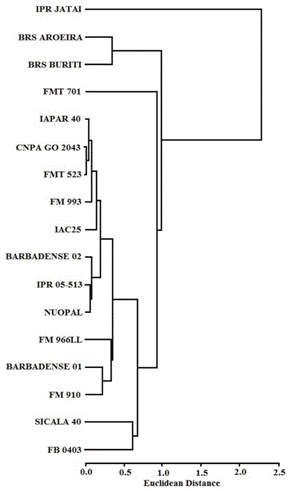ABSTRACT
Low soil phosphorus (P) is a limiting factor for plant growth in the Brazilian savannah, where P diffuses slowly and has a high fixation rate in soil (as Al-P and Fe-P). In this study, we investigated the variation in P uptake by different cotton cultivars grown in savannah soil. We conducted a greenhouse experiment using a fully factorial 2 x 17 randomized design with two P treatments (low P = 20 mg kg-1 and high P = 120 mg kg-1) and 17 cotton cultivars. The plants were potted in Acrisol soil labeled with radioisotope 32P. There was genetic variation in the P use efficiency among the cotton cultivars. The P treatments significantly influenced the dry weight of shoots (DWS), P accumulation, the specific activity of 32P, and the L-value (both the standardized and L-values discounted the P present in the cottonseed). Hierarchical clustering analysis classified the cotton cultivars into distinct, internally homogeneous clusters. Our results suggest that cotton cultivars could be selected to maximize P absorption efficiency in conditions of low plant-available P. The cultivars FMT 523, FM 910 and CNPA GO 2043 were the most responsive to P fertilization, while Barbadense 01, FM 966LL, IPR Jataí, BRS Aroeira and BRS Buriti were most efficient at absorbing plant-available P.
Keywords:
32P activity; G. barbadense; G. hirsutum; Brazilian Cerrado

 Thumbnail
Thumbnail
 Thumbnail
Thumbnail
 Thumbnail
Thumbnail
 Thumbnail
Thumbnail
 Thumbnail
Thumbnail
 Thumbnail
Thumbnail
 Thumbnail
Thumbnail
 Thumbnail
Thumbnail











